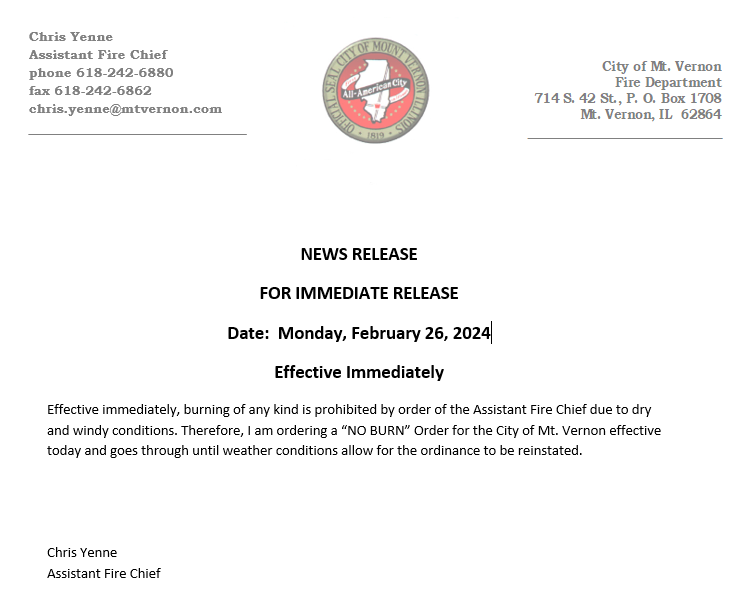Lead Service Line Information
We want to assure residents that our water is lead-free and safe to drink. We prioritize the health and well-being of our community and have taken proactive measures to address any potential lead contamination issues. Our water quality reports are available for residents to review, providing transparency and peace of mind regarding the safety of our drinking water.
Lead Service Line Replacement and Notification Act (LSLRNA)
To address the known and unknown burden of lead service lines in the state, the Lead Service Line Replacement and Notification Act, Public Act 102-0613, was passed. This Act requires community water supplies to continue inventorying activities while developing and implementing plans to identify and remove lead service lines. In addition, it requires community water supplies to give owners and occupants notifications about lead service lines serving their homes or buildings and construction activities that may release lead into drinking water. The Act also prohibits partial lead service line replacement except in certain circumstances.
Lead Service Line Replacement Program
In 2023, residents of Mt. Vernon participated in a Cross Connection/Service Line Material Survey, providing valuable information about the materials used in their service lines. The responses from this survey were compiled into a Lead Service Line Inventory Report, as mandated by the Environmental Protection Agency (EPA).
As part of the EPA mandate, the City of Mt. Vernon is required to participate in the Lead Service Line Replacement Program. The goal of this program is to gradually replace service lines that are most likely to contain lead and reduce the number of service lines with unknown materials, particularly those predicted to be lead.
Starting in 2026, the city will begin the process of replacing potential lead-containing service lines identified through the survey. Contracts will be hired to perform this work, ensuring that it is carried out efficiently and effectively.
The EPA requires that 10% of the identified lead service lines be replaced every year until the replacement project is complete. This is anticipated to be a 10-year project, allowing for a systematic and thorough replacement of lead service lines throughout the city.
During the replacement process, the service line from the water main to 18 inches inside the structure will be replaced by the city. However, it's important to note that any portion of the service line beyond the 18-inch mark, inside the structure, becomes the responsibility of the property owner for replacement.
What are Lead Service Lines?
Lead service lines are the pipes that connect the main water pipes in the street to your home's plumbing system. Here's how it works:
-
The Service Line: The service line is essentially the bridge between the city's water system and your home. It brings water from the city's main pipes to your property.
-
City Responsibility: The part of the service line that's before and including the water meter, is owned and fully maintained by the city. This means any issues with this portion are taken care of by the city.
-
Homeowner Responsibility: Generally, the part of the service line from the water meter, to the home or structure, is owned and maintained privately by you, the homeowner. This means it's your responsibility to manage and maintain this portion of the pipe.
-
Limited Information: Since the city only owns and maintains the portion of the pipe up to your water meter, they may not have detailed information about the materials used in the portion of the pipe that's on your property. This lack of information can sometimes make it challenging to know if there's lead present in that part of the service line.
Understanding lead service lines is essential because they can impact the quality of your drinking water. It's crucial for homeowners to be aware of the materials used in their service lines and take necessary steps to ensure their water is safe.
What is Lead?
Lead is a naturally occurring metal that has been used in various products, including pipes for plumbing, paint, and gasoline. While lead was once commonly used in plumbing materials, it's now known to be harmful when ingested or inhaled.
Health Effects
Exposure to lead can have serious health consequences, including:
- Children: Lead exposure in children can lead to developmental delays, learning difficulties, decreased IQ, and behavioral problems.
- Pregnant Women: Lead exposure during pregnancy can result in premature birth, low birth weight, and developmental delays in the baby.
- Adults: Lead exposure in adults can cause high blood pressure, kidney damage, reproductive problems, and neurological effects.
How Can You Be Exposed to Lead?
Lead exposure can occur through various pathways, including:
- Drinking Water: Lead can leach into drinking water from lead service lines, plumbing fixtures, or solder used in plumbing.
- Paint and Dust: Lead-based paint, especially in older homes, can chip or peel, leading to ingestion of lead dust or paint chips.
- Soil and Air: Lead particles can settle in soil from past use in gasoline, paint, and industrial activities. Disturbing contaminated soil or living near industrial areas can lead to exposure.
- Occupational Hazards: Certain occupations, such as construction, battery manufacturing, and renovation work, can lead to exposure to lead.
How To Protect Yourself
To minimize the risk of lead exposure and contamination of drinking water, consider the following measures:
- Test Your Water: Regularly test your drinking water for lead contamination, especially if you live in an older home or suspect lead pipes.
- Use Cold Water: Use cold water for cooking and drinking, as hot water can leach more lead from pipes.
- Flush Pipes: If water has been sitting in your pipes for several hours, flush them by running the tap for at least 30 seconds to a few minutes before using the water for drinking or cooking.
- Install Filters: Consider installing a water filter certified to remove lead, especially if your water tests positive for elevated lead levels.
- Replace Lead Pipes: If your home has lead service lines or plumbing fixtures, consider replacing them with lead-free materials to reduce the risk of lead contamination.
By understanding how lead exposure occurs and taking proactive steps to minimize exposure, you can protect yourself and your family from the harmful effects of lead contamination in drinking water.
Contact Information
Public Works Office
1201 Casey Avenue
Mount Vernon IL 62864
Phone: (618) 242 - 6853
Fax: (618) 242 - 6861
Office Hours
Monday - Friday
7 a.m. - 3 p.m.
After Hours/Emergency
Call: (618) 242 - 2131
Matt Fauss
Public Works Director
Email: matt.fauss@mtvernon.com

